ADVERTISEMENT
Rafael Truillo
Rafael L. Trujillo welcoming Paul Magloire in Santo Domingo
Rafael L. Trujillo welcoming newly-elected Haitian President Paul Magloire in Ciudad Trujillo, Santo Domingo in February 1951. also present were, army officer Hector and Trujillo's son Ramfis.
Rafael Leónidas Trujillo Molina (born on October 24, 1891) was a Dominican politician, soldier and dictator, who ruled the Dominican Republic from February 1930 until his assassination in May 1961. Trujillo was killed by a group of rebels determined to topple his regime. He was Dominican President between 1930-1938 and 1942-1952. In 1937, he ordered the massacre that took more than 35,000 Haitian lives on charges of invading the Dominican Republic. It was launched by the army with common criminals released for these purposes against Haitians living in the Dominican Republic's northwestern frontier and in certain parts of the adjacent Cibao region. It was a shameful and brutal event that harmed his prestige in the entire world. Punishment for the atrocity amounted to an agreement in which a paltry US $525,000 was paid to the Haitian government. Haitian President Élie Lescot put the death toll at 12,168; in 1953, the Haitian historian Jean Price-Mars cited 12,136 deaths and 2,419 injuries. In 1975, Joaquín Balaguer, the Dominican Republic's interim Foreign Minister at the time of the massacre, put the number of dead at 17,000. Other estimates compiled by the Dominican historian Bernardo Vega went as high as 35,000. Before the massacre, Trujillo made his intentions towards the Haitian community clear in a short speech which he delivered on 2 October 1937 at a dance in his honor in Dajabón. He accused Haitians on charges of thefts of cattle, provisions, fruits, etc., and thus they were preventing Dominican people to live a peaceful life.
Trujillo was a man of bad temper, but had many fabricated justifications of such mass genocide. With the crash of world markets and the onset of the Great Depression in 1929, the price of sugar fell drastically, sugar production was cut, and the Haitian worker was no longer in demand in the Dominican Republic. In 1931, Trujillo took power and began to deport Haitians living in the Dominican Republic using discriminatory and inhuman policy to the Haitians. However, when in the 1950s, when the economic situation became reversed, he took a different tone because, by then he had accumulated about 75% of the Dominican sugar mills and had forced many U.S. competitors out of business. To maximize his profit, he turned to the Haitian workers. In 1952, Trujillo and Haiti's President, Paul Magloire, signed a bilateral agreement in which the Dominican Republic bought 16,500 Haitian workers directly from the Haitian government. These migratory Haitian sugar cane cutters were kept in wooden barracks where there was no running water, no electricity, and no bathrooms; the workers were not allowed to leave except to cut sugar cane. Armed guards from the sugar companies kept close watch on them. However, the Haitian government received compensation in selling these men; the money never trickled down into the worker's hands.
Elie Lescot, Stenio Vincent, Rafael Trujillo
Here is a picture dated back 1935. In this picture, you see Elie Lescot, Stenio Vincent and Rafael Trujillo of the Dominican republic.
As you may remember, in 1937, over 20,000 Haitians were massacred in the Dominican Republic. This is to be called The Parsley Massacre. This was a government-sponsored genocide of the Dominican Government in October 1937, headed by the Dominican dictator Rafael Trujillo.
The massacre took place following a direct order of Dominican President Rafael Trujillo who ordered the execution of the Haitian citizens living in the borderlands with Haiti.
This action by Trujillo was supposed to be a response for Haitians at the border allegedly involved in cattle and crops stealing from Dominican residents

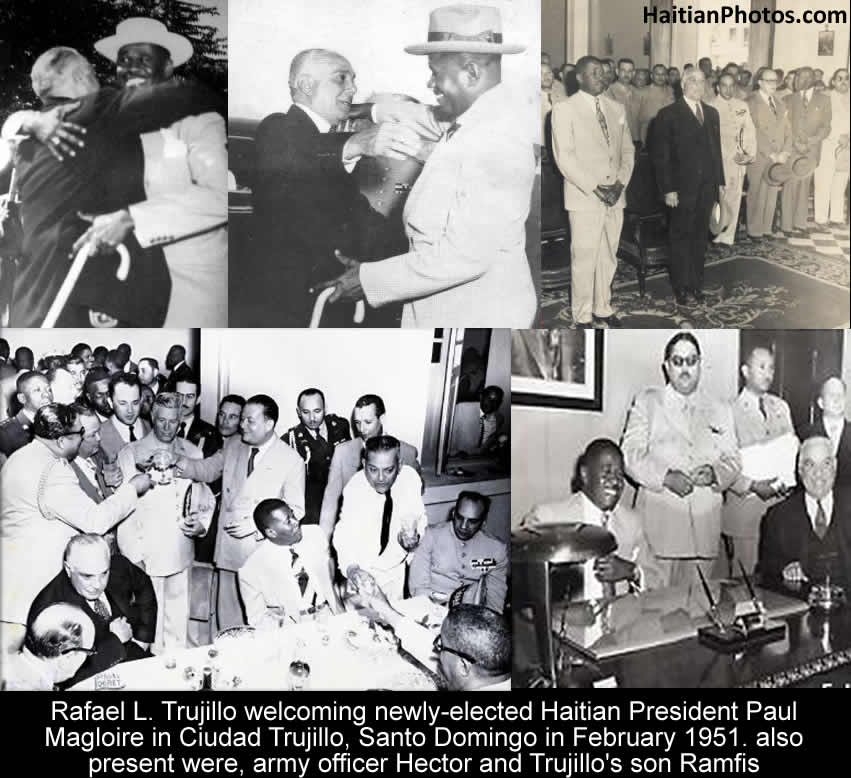
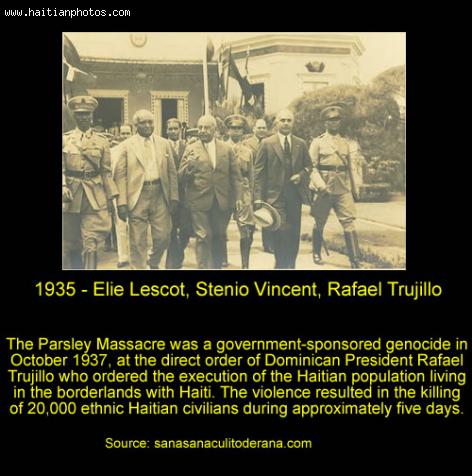
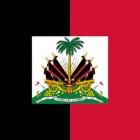 Haitian Flag Under Francois Duvalier changed in 1964 to black...
Haitian Flag Under Francois Duvalier changed in 1964 to black... 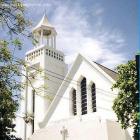 Nouveau College Bird in Port-au-Prince, Haiti
Nouveau College Bird in Port-au-Prince, Haiti  Ougan Alcenat Zamor eli nouvo Nasyonal ati
Ougan Alcenat Zamor eli nouvo Nasyonal ati 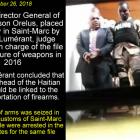 Former PNH Chief, Godson Orelus, arrested for illegal arm...
Former PNH Chief, Godson Orelus, arrested for illegal arm... 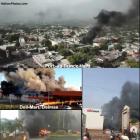 Port-au-Prince on fire over gas prices hike
Port-au-Prince on fire over gas prices hike  Commissioner Frantz Pierre indicted for accepting bribes
Commissioner Frantz Pierre indicted for accepting bribes 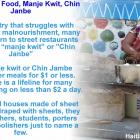 Haiti Street Food, manje kwit or Chin Janbe, for $1 or less
Haiti Street Food, manje kwit or Chin Janbe, for $1 or less  Haitians, the second largest black immigrant group in the US
Haitians, the second largest black immigrant group in the US 



